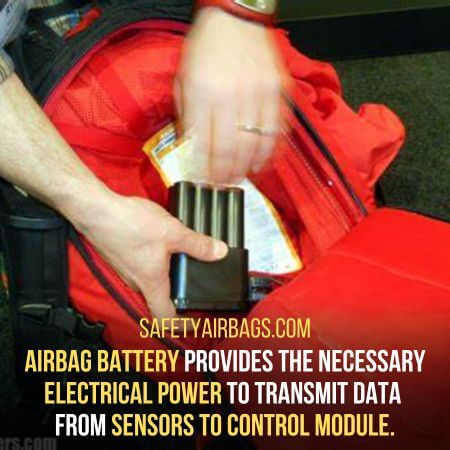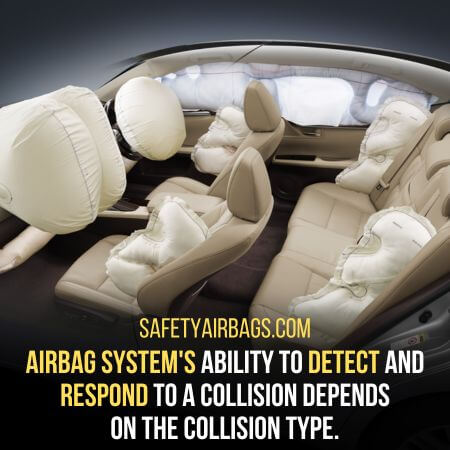Will an airbag work without a battery? No, we are afraid not! However, airbags are an important safety feature in modern vehicles, designed to protect drivers and passengers during accidents.
What Will I learn
- 1 Will An Airbag Work Without A Battery?
- 2 Role Of Battery In An Airbag System
- 2.1 1. Powering The Sensors:
- 2.2 2. Activating the Airbag Inflator:
- 2.3 3. Powering the Airbag Control Module:
- 2.4 4. Powering the Vehicle’s Electrical System:
- 2.5 5. Providing Backup Power:
- 2.6 6. Providing Power to the Diagnostic System:
- 2.7 7. Storing Crash Data:
- 2.8 8. Preventing Accidental Airbag Deployments:
- 3 Scenarios Where Battery Might Fail
- 4 Factors That Determine Whether Or Not The Airbags Will Work Without A Battery
- 5 Conclusion:
The purpose of this article is to explore the role of the battery in an airbag system. We will also discuss the potential risks of a failed airbag and how to ensure that your airbag system is working properly.
Will An Airbag Work Without A Battery?
No, an airbag will not work without a battery. The battery is crucial in providing the necessary electrical Power to activate the airbag inflator.
The inflator will not function properly without the battery, and the airbag will not deploy in a collision.
Additionally, a dead or disconnected battery can prevent the airbag sensors from transmitting their data to the control module, preventing the airbag from deploying.
Therefore, it is important to regularly check the battery to ensure that it is functioning properly to ensure the proper functioning of the airbag system.
Role Of Battery In An Airbag System
Battery plays a crucial role in the airbag system. Let’s find out different ways it helps in the deployment of the airbag system:
1. Powering The Sensors:
Airbag sensors are typically located at the front of the vehicle and are designed to detect sudden deceleration, such as during a collision.
They are connected to the airbag control module, which analyzes the sensor data and determines if an airbag deployment is necessary.

When the vehicle experiences a sudden deceleration, such as during a collision, the sensors detect this change and send a signal to the airbag control module.
The sensor data is transmitted to the airbag control module through a wiring harness connected to the vehicle’s battery.
The battery provides the necessary electrical power to transmit the data from the sensors to the control module.
If the battery is dead or disconnected, the sensors cannot send their data to the control module. As a result, the airbags will not deploy in a collision.
2. Activating the Airbag Inflator:
The airbag inflator is a device that rapidly fills the airbag with gas in the event of a collision.
It is typically located inside the steering wheel or dashboard and is connected to the airbag control module.
When the airbag control module determines that airbag deployment is necessary, it signals the inflator to activate.
The inflator uses a small amount of stored electrical energy to ignite a chemical reaction producing a large gas volume.
This gas inflates the airbag and provides cushioning for the driver and passengers.
The vehicle’s battery provides the electrical signal that activates the inflator.
If the battery is dead or has been disconnected, the inflator will not be able to receive the necessary electrical signal to activate.
As a result, the airbags will not deploy even if the sensors detect a collision.
The battery is crucial in providing the necessary electrical Power to activate the airbag inflator.
The inflator will not function properly without the battery, and the airbags will not deploy in a collision.
3. Powering the Airbag Control Module:
The airbag control module is the brain of the airbag system. It analyzes the sensor data and determines if an airbag deployment is necessary.
The control module requires electrical Power to function, supplied by the vehicle’s battery.
4. Powering the Vehicle’s Electrical System:
The airbag system is just one component of the vehicle’s electrical system. It includes components such as the lights, radio, and HVAC system.
The battery provides the necessary electrical power to all components, including the airbag system.
5. Providing Backup Power:
In some vehicles, the airbag system is designed to continue functioning for a short period,e even if the battery is disconnected.
The airbag control module and inflator may have backup power sources. For example, these may be a capacitor that can provide enough power to deploy the airbags in the event of a collision.
However, this backup Power is intended to last for a short period and is not a substitute for a properly functioning battery.
6. Providing Power to the Diagnostic System:
The airbag system has a diagnostic system that monitors the system for faults and issues. This diagnostic system requires electrical Power to function, supplied by the vehicle’s battery.
If the battery is dead or disconnected, the diagnostic system will not be able to detect any issues with the airbag system.
7. Storing Crash Data:
The airbag system may store crash data in its control module. It can be used to help determine the cause of the crash and whether the airbags deployed correctly.
This data is stored in non-volatile memory, which means it is not lost if the battery is disconnected or removed.
8. Preventing Accidental Airbag Deployments:
In some vehicles, the airbag system may have a backup power supply. It is used to prevent accidental airbag deployments during routine maintenance or repairs.
This backup power supply is typically a capacitor charged by the vehicle’s battery.
It can provide enough power to deploy the airbags in an emergency but not enough to accidentally deploy them during maintenance.
Scenarios Where Battery Might Fail
There are several scenarios where the battery in a vehicle might fail or become disconnected, such as:
1. A dead battery can occur for various reasons, such as leaving the lights on overnight or a faulty alternator.
2. Corrosion or loose connections between the battery terminals and the cables can result in a poor electrical connection and prevent the battery from functioning properly.

3. A damaged battery, such as a cracked or leaking battery, can prevent it from holding a charge or delivering Power to the vehicle’s electrical system.
4. Extreme temperatures, such as excessive heat or cold, can cause the battery to fail or lose its charge quickly. In cold temperatures, the battery’s ability to deliver power is reduced; in hot temperatures, the battery can become overcharged and damaged.
5. Batteries have a limited lifespan and will eventually lose their ability to hold a charge. If the battery is older, it may fail or become weak, causing the airbag system and other electrical components to malfunction.
6. A faulty alternator or charging system can prevent the battery from receiving a charge, resulting in a dead battery.
Parasitic drain: Parasitic drain is a phenomenon where the vehicle’s electrical system continues to draw power even when the engine is off.
This can occur due to faulty electrical components, such as a malfunctioning radio or interior light, and can cause the battery to drain quickly.
Factors That Determine Whether Or Not The Airbags Will Work Without A Battery
The airbag system’s ability to function without a battery depends on several factors, such as:
1. Backup Power Supply:
Some airbag systems have a backup power supply, such as a capacitor. They can provide enough power to deploy the airbags in an emergency.
However, this backup power supply is designed to last for a short period and is not a substitute for a functioning battery.
2. Type Of Collision:
The airbag system’s ability to detect and respond to a collision depends on the collision type.

If the collision is severe enough to trigger the airbag sensors, the airbags will not deploy without Power from the battery.
3. Manufacturer Specifications:
Each vehicle manufacturer has different specifications for their airbag systems. Some may require a functioning battery for the airbags to deploy.
Therefore, it is essential to consult the vehicle owner’s manual or contact the manufacturer to determine their specific requirements for the airbag system to function properly.
4. Type Of Airbag System:
Different types of airbag systems may have different requirements for electrical power.
For example, some vehicles may have airbag systems that use pyrotechnic inflators that require significant electrical power to deploy.
In contrast, other vehicles may use compressed gas inflators that require less Power.
5. Condition Of Airbag System Components:
The condition of the airbag system components, such as the sensors and inflator, can also affect whether or not the airbags will deploy without a battery.
If these components are damaged or malfunctioning, the airbag system may not deploy, even if electrical Power is available.
6. Vehicle Speed At The Time Of Impact:
The speed at which the vehicletravelsg at the time of impact can also affect whether or not the airbag system will deploy.
Sometimes, the airbag system may not deploy if the vehicle travels very low speed or the impact is not severe enough to trigger the airbag sensors.
7. The Angle Of Impact:
The impact angle can also affect the airbag system’s ability to deploy.
If the impact is at an angle that does not trigger the airbag sensors, the airbags may not deploy, even if electrical power is available.
Conclusion:
In conclusion, an airbag can not work without a battery. Therefore, maintaining the battery and other components of the airbag system is crucial to ensure proper functionality.
By doing so, we can help ensure the safety of ourselves and our passengers while driving.
Regular maintenance checks and inspections can go a long way in keeping us safe on the road.
